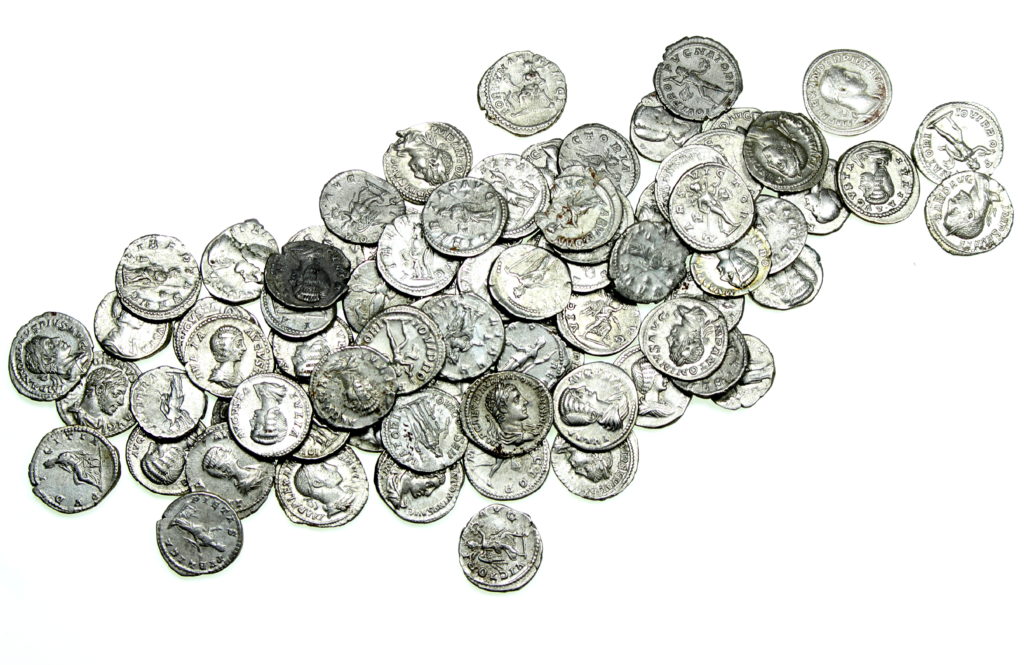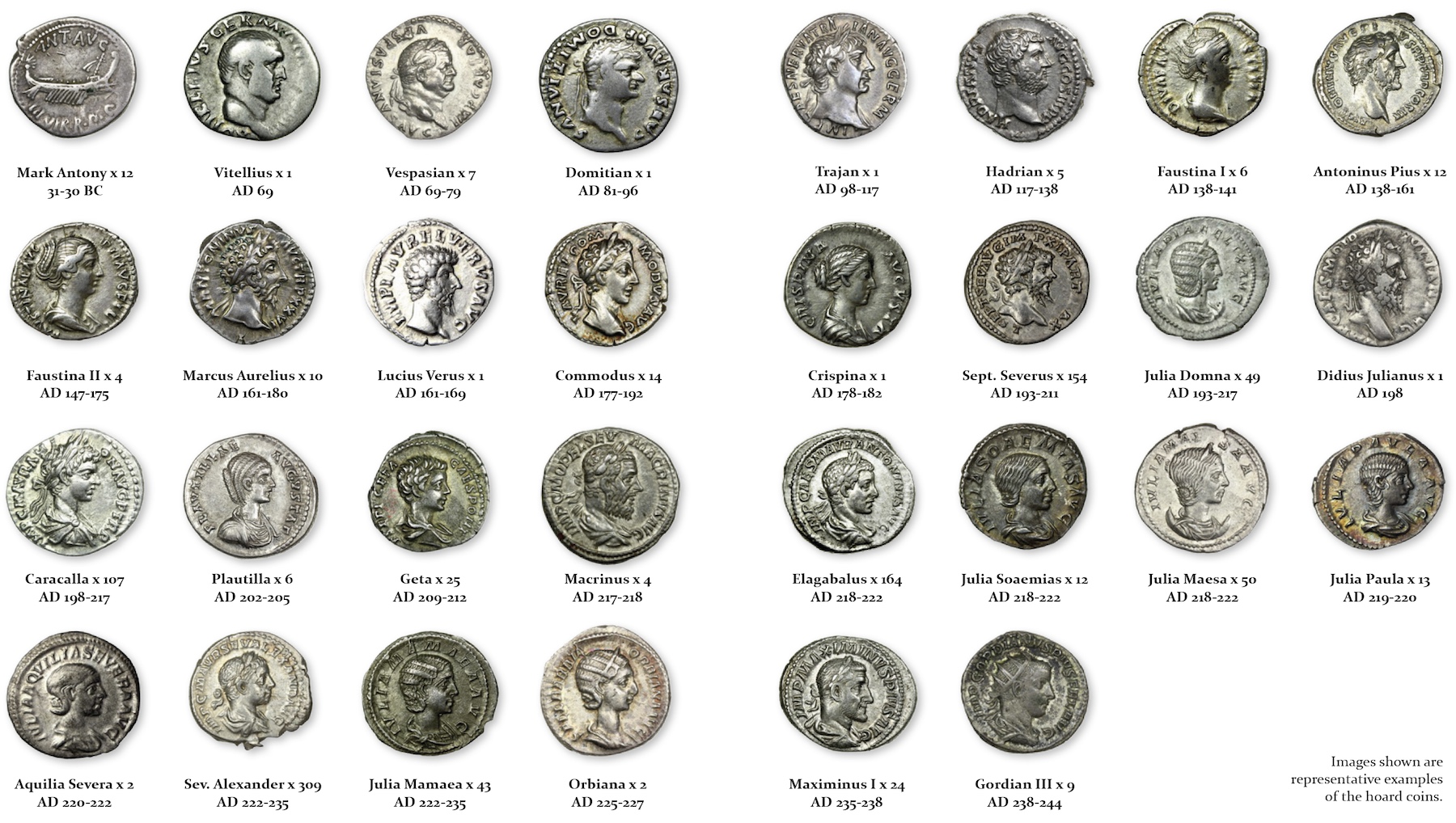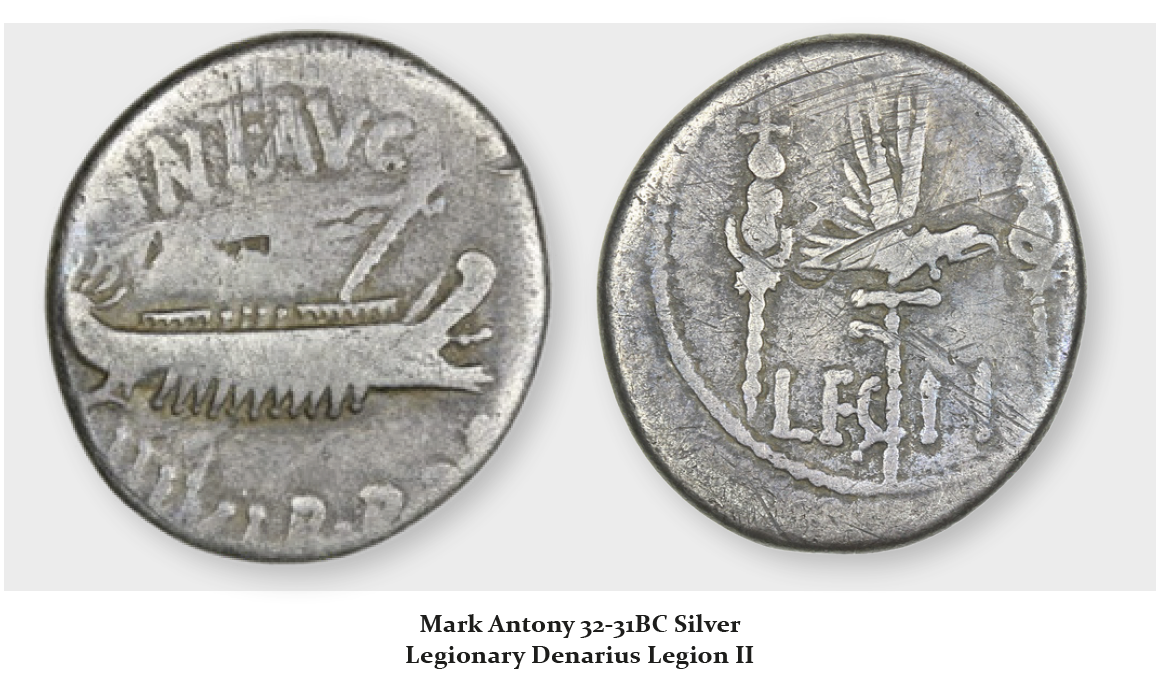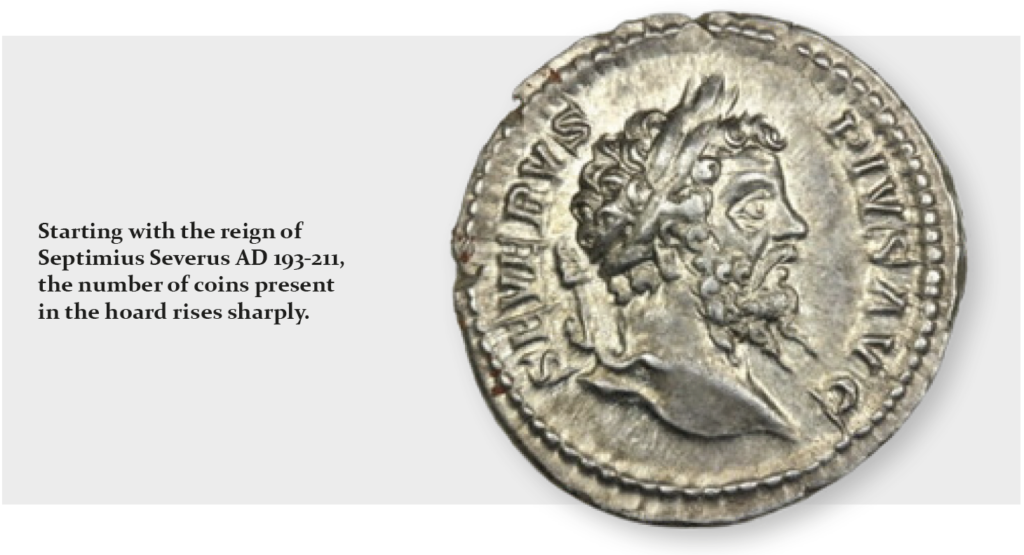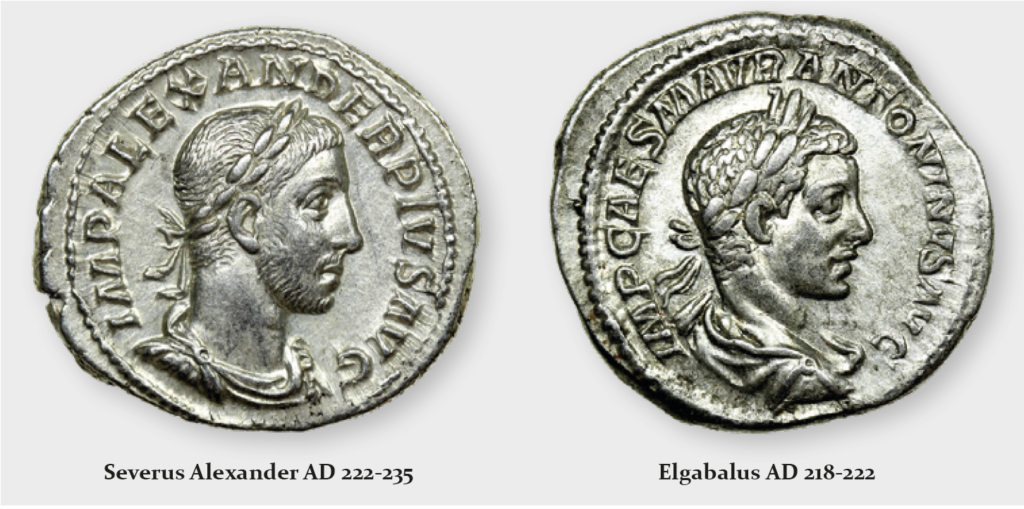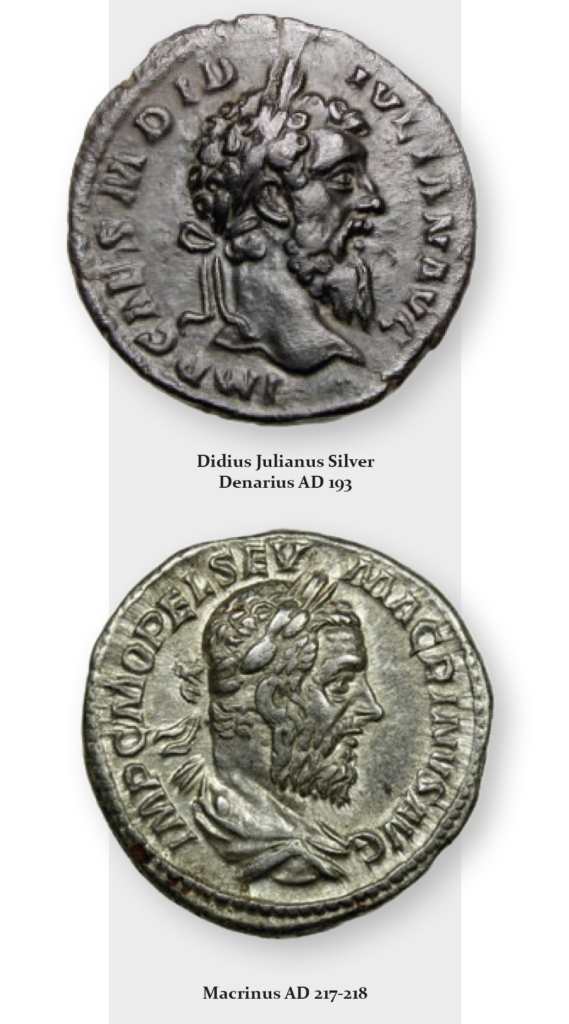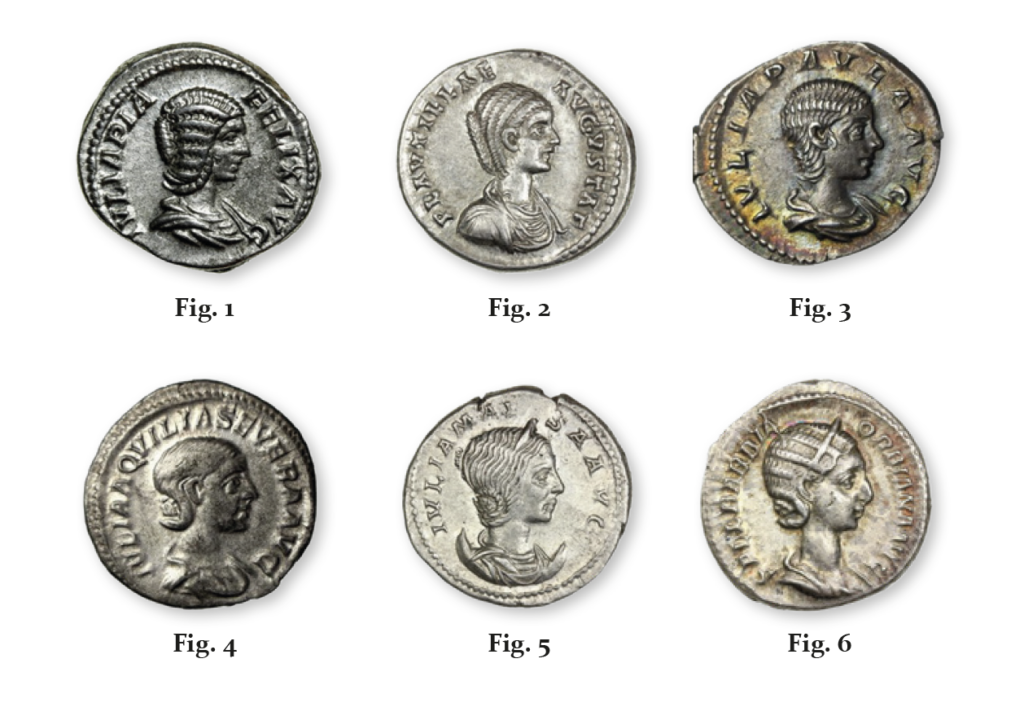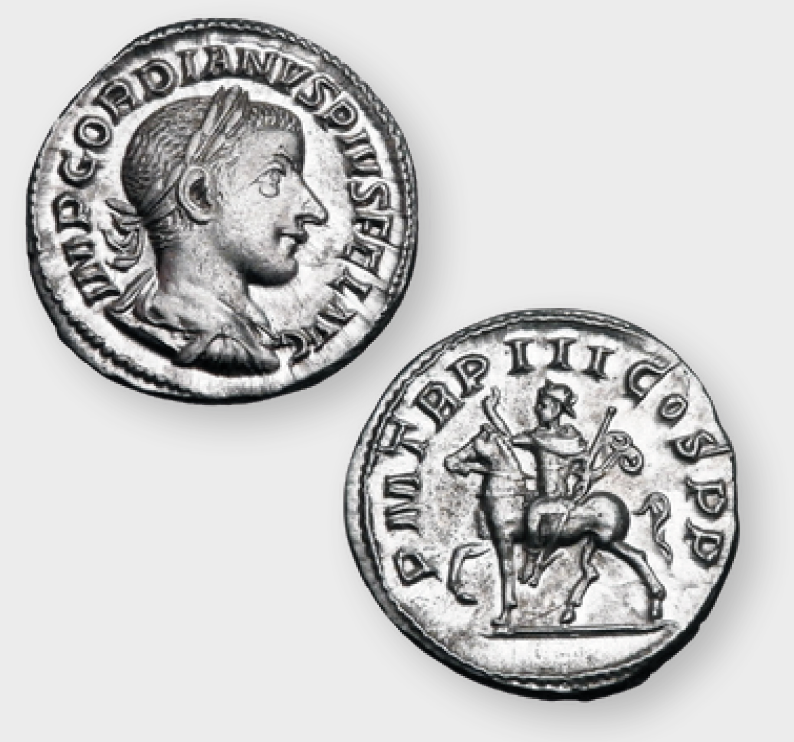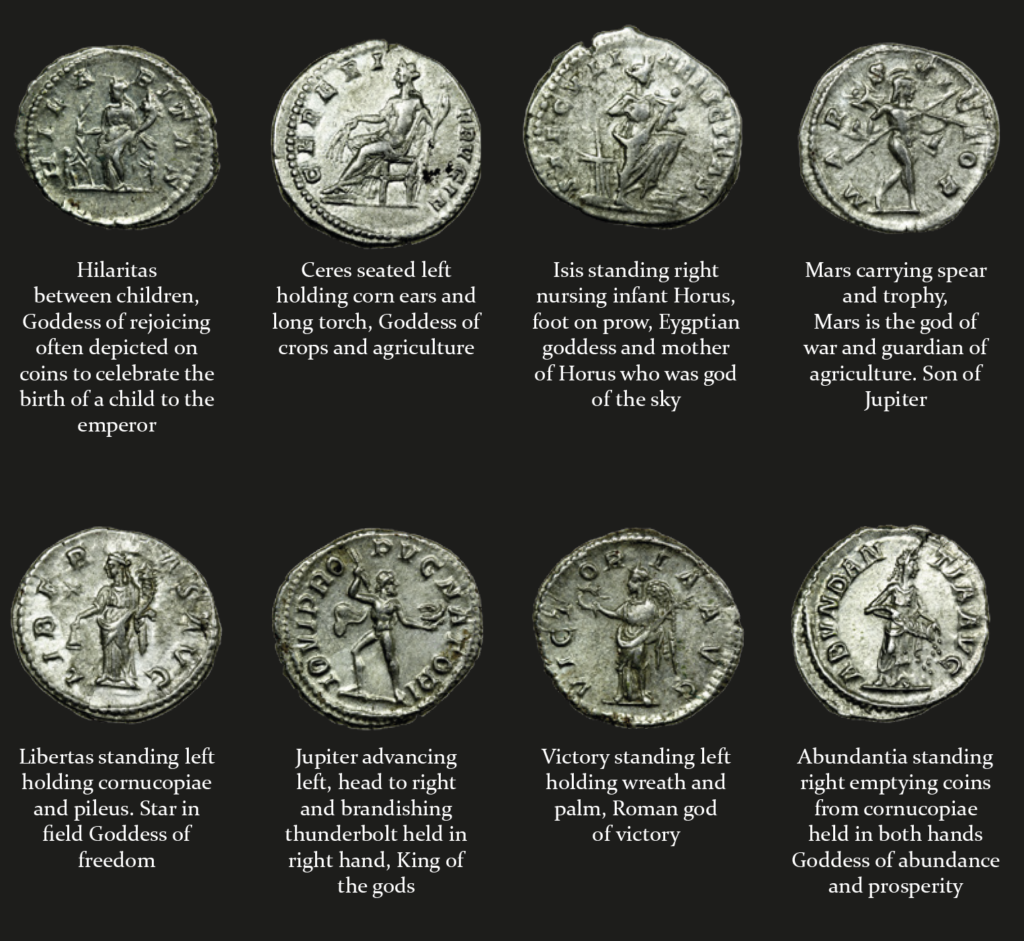The Dereham Hoard
The Dereham hoard of some 1049 Roman silver coins was found in 2004 by metal detectorists Pat & Sally Buckley. The hoard was buried in a greyware pot during or shortly after AD 240 during the reign of the Roman emperor Gordian III. Here it remained until disturbed by ploughing in the early 2000s.
Some scattered coins were recovered by the metal detectorists who then contacted Norfolk’s Identification and Recording Service so that they could visit the site and undertake a proper excavation.
Pat and Sally took the field archaeologists to the spot where their machines ‘went in to overdrive’ and a controlled excavation began. With the help of the metal detectors the epicentre was quickly located and a damaged pottery vessel containing some 800 coins was carefully uncovered. Further scattered coins were found nearby until a total of 1049 coins were eventually recovered. to view the Portable Antiquities Scheme record click here.

